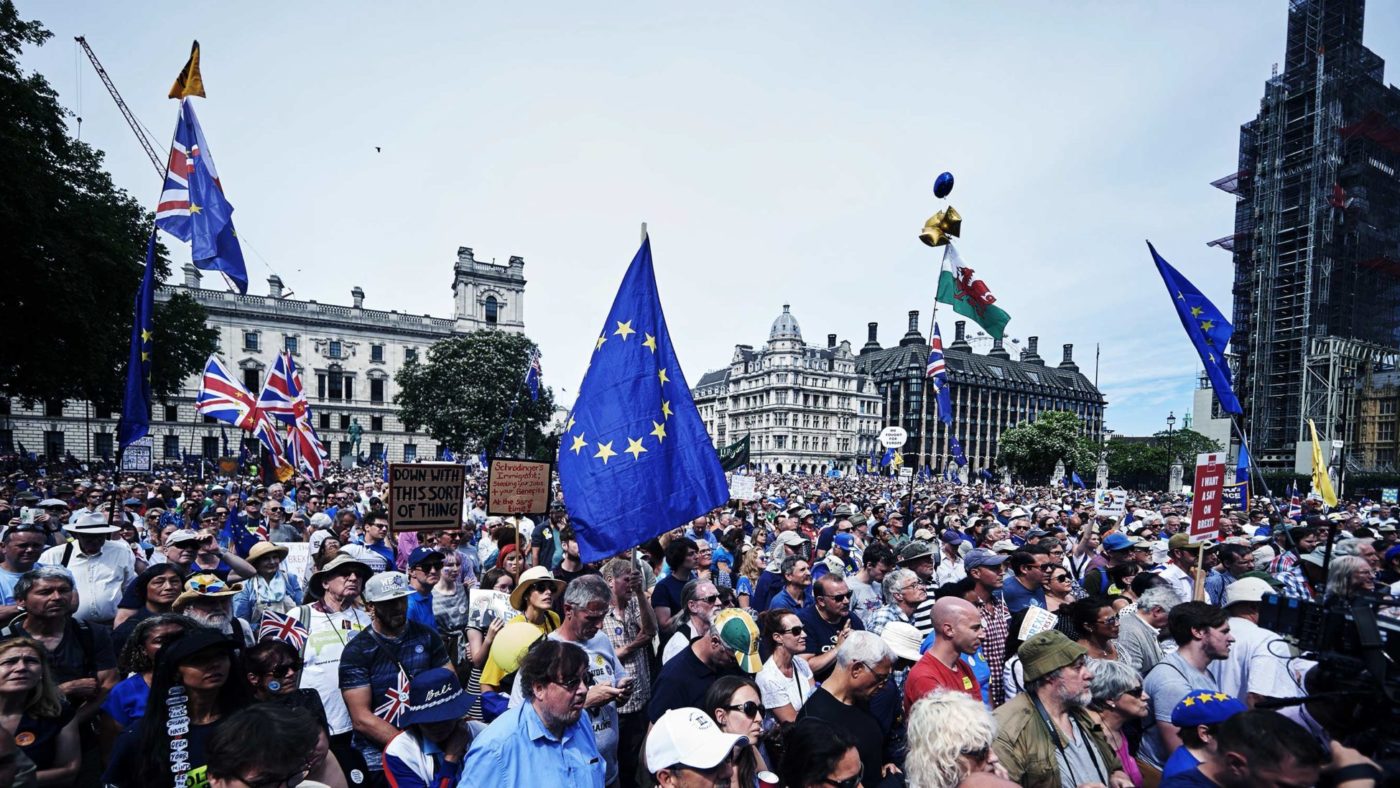Polls say the public wants another Brexit referendum. They also show that the public doesn’t want another referendum. We’re in a situation where polls say a lot of different things. As is often the case, people on both sides of the debate are guilty of cherry-picking; creating a misleading impression by choosing only favourable evidence.
So whether you think the public is hot or cold on Brexit may well depend on who you listen to.
And, as always, there can be significant differences between polls, even when they ask the same questions to what are, in theory, the same people. Pollsters have a number of methodological choices to make in order to gauge public opinion, many of which have no single “right” answer, but often have different consequences for the numbers everyone sees, known in aggregate as “house effects”.
And contrary to the oft-heard conspiracy theory, these calls are made on the basis of what is thought likely to maximise accuracy within the time and budget constraints of public polling, not the editorial positions of media clients.
That said, even bigger divergences can be found when pollsters ask different questions. As with the methodology itself, there is often no single “right” way to ask a question (though there are wrong ones). There are different formats and different ways of phrasing both the question part and the multiple choice answers. Additionally, the question can actually be semantically different, not just presented differently.
Several pollsters ask questions relating to the government’s (or the Prime Minister’s) handling of the Brexit process. The answers, increasingly, have tended towards the negative end of the scale.
This partly reflects the composition of the respective parties’ support. Many current Conservative voters are Leavers, and are unhappy post-Chequers. Many supporters of other parties aren’t happy with the government in general, irrespective of the issue. YouGov found “badly” leading “well” by a margin of 75-14 in its latest poll, with Ipsos MORI “not confident” led “confident” by 72-15.
This type of question generates some eye-catching headlines, but doesn’t seem to be a good indicator of the appetite for Brexit going ahead, or indeed support for the governing party itself, despite its weakness on the salient issue of the day.
Another closely-watched series is YouGov’s retrospective question on whether the Brexit vote was right or wrong, and the highly correlated question of how respondents would vote in a hypothetical second referendum. These series have been incredibly stable, with the churn of Leavers switching to Remain or “wrong” and Remainers switching to Leave or “right” largely cancelling one another out.
Yet there has, overall, been a slight swing to Remain and since 2016, with most of these types of polls now showing narrow leads for the pro-EU option.
This has tended to be 2016 non-voters thinking that the vote was the wrong decision, as opposed to more Leavers than Remainers switching sides. The distinction is crucial, because it doesn’t represent a change in opinion. It may matter in the event of a second referendum actually being held (and Remainers being more like to vote than the first time around). But it doesn’t represent a net changing of minds.
Of course, saying you would vote in a second referendum isn’t the same as actually wanting one. That number generally hasn’t been a majority, although YouGov’s latest poll gave a two-point lead for holding one, the first time it’s recorded net support.
Second referendum questions seem particularly sensitive to question wording. Mentioning a referendum directly is far less popular than a “people’s vote” and “final say” – a net difference of 15 points when YouGov split tested its standard question against a “final say” wording. It’s open to debate which of these wordings best captures the public mood.
Part of the problem is that answers to these questions – which have been asked by various pollsters – contain an inherent contradiction. Support for a fresh plebiscite collapses among Leavers if it’s a choice between a deal and Remain, and it collapses among Remainers if it’s between deal and no deal. As if to prove the point, Sky Data found a ten-point lead (50-40) for a three-way referendum.
The debate won’t be completely over even when the negotiations are concluded, or indeed ever. There will, inevitably, be people who would support rejoining. When Number Cruncher asked the question in late March and early April, 31 per cent would back a reversal of Brexit after the fact, but 47 per cent would not. The 16-point gap arises because Conservative Remainers are less keen on revisiting the EU question (or at least, they were at the time).
The very latest data points are consistent with a larger shift in sentiment. Sky Data’s latest numbers found those thinking Brexit with be bad for the country overall outnumbering those thinking it will be good by 11 points, up from two points in March.
What we can say, then, is that there are at least signs that some voters may be wavering on Brexit and particularly on hard Brexit. This is obviously potentially significant, and should be watched closely. But for now, the evidence is patchy and we need to wait for much more data before being concluding that the “public turning against Brexit” narrative is accurate.


